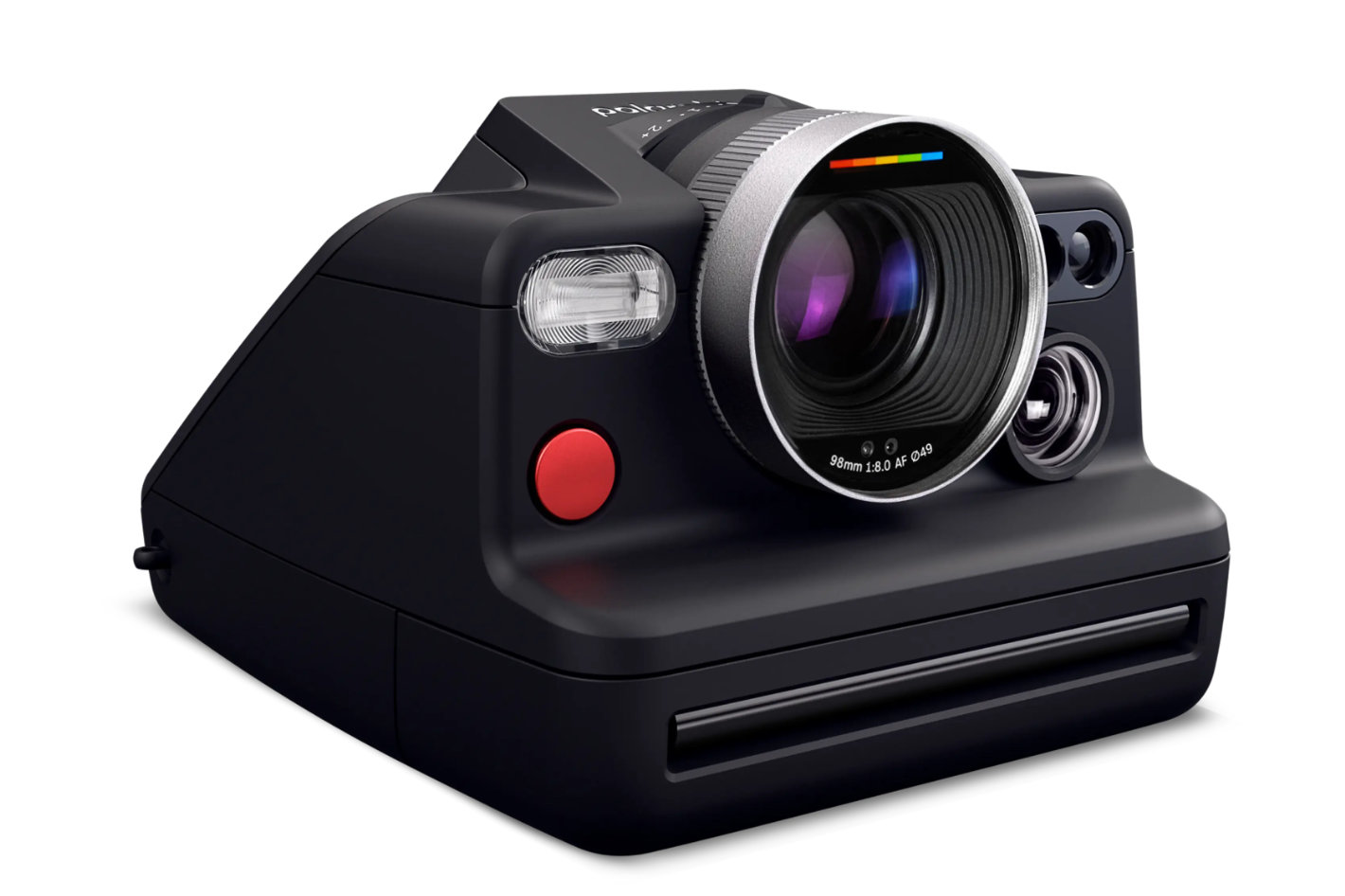
Polaroid rhymes with instant photography and even if Fujifilm has taken the crown in recent years with its Instax series, which continues to rise in popularity, Polaroid is the reference name for a whole generation and the term used to refer to the photos captured – and developed – by… Polaroid cameras!
Polaroid’s new camera is different from previous models, though. The new I-2, engineered and designed for craft, is the first analog instant camera with built-in manual controls. Pair it with the sharpest-ever Polaroid lens – better than the one used in the classic SX70, the company says – and the unique chemistry of Polaroid film, and you have an instant craft tool made for the tactile, creative pursuit of analog photography.
The I-2 was created completely in-house. Its sleek black form is a direct result of its function, with the camera being built around its manual controls and Japan-team-designed lens. In fact, to build the Polaroid I-2 the company looked at the place that has more history and tradition when it comes to cameras, Japan, and the project moved ahead with two engineers that worked at Olympus – Yusuke Kojima and Toshimasa Akagi – for many years as part of a team experienced in analog photography, trying to create a camera that is iconic, yet original. A craftsperson’s tool, in an elegant design.
The body, created by a team from Taiwan, encapsulates an optical viewfinder – big, bright and clear, says the team – that follows the base idea for the I-2: an instant camera with some of the most modern technology mixed with the experience of instant photography cameras. Together with the analog film and manual control, the aim is to provide photographers with a pure Polaroid experience taken at the highest level possible.
Nick Woodley, director of industrial design at Polaroid, who was responsible for the entire 3D surfacing for the entire external camera suggests adjustments were made along the way, to make sure that “people fall in love with our products”. For focusing the camera uses, besides a three lens system that allows for continued focus with LIDAR, which is gives precise ranging and is a technology we may see in more cameras in the future… Panasonic, for example.
With different prototypes of the Polaroid I-2 distributed around the world, for photographers to test, the results helped to create the final product, which took four years to develop. The final camera offers six exposures modes, – automatic, aperture and shutter priority, manual, multiple exposure and timer – and the camera starts in auto mode, giving photographers the option to compensate exposure in the conventional -/+ 2 EV range.
In aperture priority mode you choose any of seven apertures – ƒ8, ƒ11, ƒ16, ƒ22, ƒ32, ƒ45, ƒ64, to control depth of field and bokeh. Shutter priority mode goes from 1/250 to 30s and then a Bulb mode that can work for 99 hours. A 98mm 3-element lens with continuous autofocus system, capable of focusing from 0.4m (1.3”) to infinity, with its range controlled via stepping motor, is the window to the world, with light metering using a classic center weighted single zone. Polaroid says the metering system covering represents 60% of optical FOV.
A tripod mount and a built-in lens filter thread mount – 49mm – are included. The camera has a flash, a classic vacuum discharge tube strobe with a range of 2.5m at ƒ8. There is also a 2.5mm external flash sync. port and a Type-C charging input. Compatible with Polaroid i-Type Film, Polaroid 600 Film and Polaroid SX-70 Film, the camera uses a rechargeable Lithium-Ion Polymer battery.
“Made for the Imperfectionists”, as Polaroid says in its marketing, the Polaroid I-2 has a price of $599.99. It may not be the camera for those eager to post all their photos to social media – some of which will probably get lost in all the control options this camera offers -, but if you’ve always wanted to try a Polaroid camera but aspired for more control of the final product, the Polaroid I-2 may be the answer to all your dreams.
